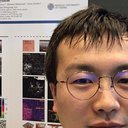Paeoniflorin ameliorates ANIT-induced cholestasis by activating Nrf2 through an PI3K/Akt-dependent pathway in rats.
Keywords
Abstract
Cholestasis causes hepatic accumulation of bile acids leading to liver injury, fibrosis and liver failure. Paeoniflorin, the major active compound isolated from the roots of Paeonia lactiflora pall and Paeonia veitchii Lynch, is extensively used for liver diseases treatment in China. However, the mechanism of paeoniflorin's hepatoprotective effect on cholestasis has not been investigated yet. In this study, we administered paeoniflorin to rats for 3 days prior to alpha-naphthylisothiocyanate (ANIT) administration for once, then went on administering paeoniflorin to rats for 3 days. The data demonstrated that paeoniflorin significantly prevented ANIT-induced change in serum alanine aminotransferase (ALT), aspartate aminotransferase (AST), alkaline phosphates (ALP), serum total bilirubin (TBIL), direct bilirubin (DBIL), total bile acid (TBA) and gamma-glutamyl transpeptidase (γ-GT). Histology examination revealed that paeoniflorin treatment rats relieved more liver injury and bile duct proliferation than ANIT-administered rats. Moreover, our data indicated that paeoniflorin could restore glutathione (GSH) and its related synthase glutamate-cysteine ligase catalytic subunit (GCLc) and glutamate-cysteine ligase modifier subunit (GCLm) in ANIT-treated group. In addition, the RNA and protein expression of Akt and nuclear factor-E2-related factor-2 (Nrf2) were also activated by paeoniflorin in ANIT-induced rats. These findings indicated that paeoniflorin protected ANIT-induced cholestasis and increased GSH synthesis by activating Nrf2 through PI3K/Akt-dependent pathway. Therefore, paeoniflorin might be a potential therapeutic agent for cholestasis.


